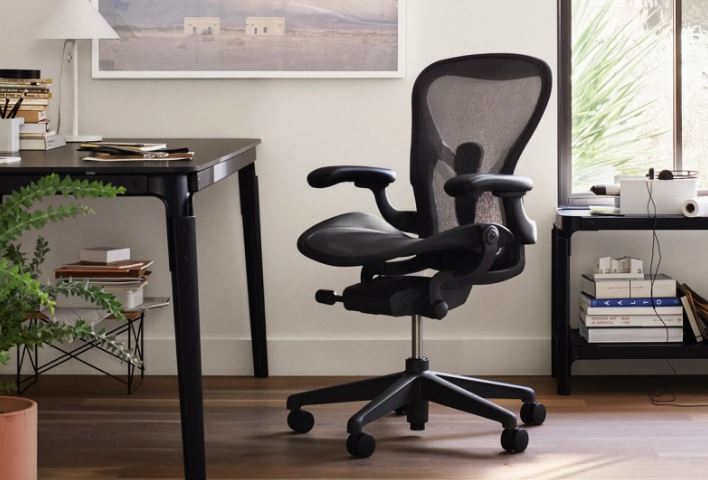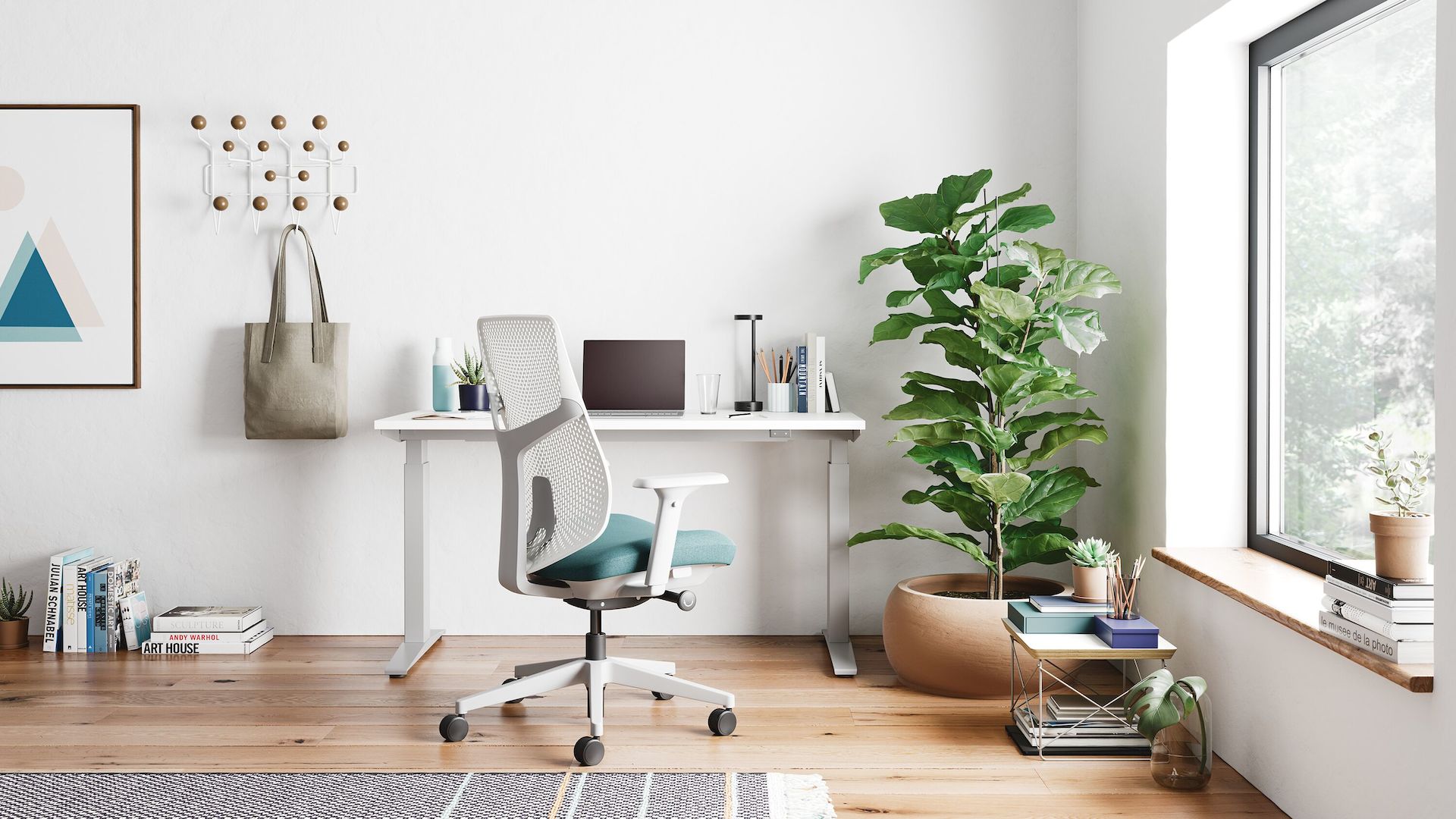==================
A Caveat and Affiliates
First off, a little caveat: within my articles you will find affiliate links, meaning if you buy them, I get a small commission. Your cost is not affected. In addition, I am an Amazon Associate and I earn from qualifying purchases on Amazon.
And yes, if I say that I recommend a product here, it means I truly believe it is a good product. I refuse to recommend any product that I have not researched and believe to be a good value.
Even better, I provide you with a very clear picture of the product, it’s use, and the probable value.
Earning your trust is important to me. I run this website myself and the commissions and donations help support the site.
Sound reasonable and fair enough? Let’s continue to the article.
==================
In modern work environments, office chairs hold paramount importance. Ergonomic office chairs profoundly impact productivity, health, and overall well-being.
Centered around enhancing work experience, ergonomic office chairs have become essential tools for both comfort and efficiency. These chairs address the key features that make them indispensable elements of any office setup. They encompass adjustable elements, such as arms, height, and recline angles, allowing users to tailor their seating positions for optimal comfort. Caster wheels enable easy mobility and swift access to various workstations, while a swivel mechanism fosters flexibility.

Integrating features like armrests, headrests, and lumbar support ensures that individuals maintain proper posture, alleviating strain and tension. Materials and cushioning are chosen for their durability and comfort, promoting prolonged usage without discomfort. Furthermore, ergonomic office chairs are not just functional; they come in various styles that can seamlessly complement the aesthetics of any workspace.
This blog delves into the multifaceted aspects of a good office chair, showcasing its pivotal role in creating a conducive work environment. As the realm of office furniture continues to evolve, the significance of ergonomic office chairs remains resolute, contributing to individuals’ health, productivity, and well-being across diverse professional settings.
Contents
Ergonomics and Adjustability
Ergonomics and adjustability are pivotal aspects that define the essence of a well-designed office chair, promoting optimal comfort and posture for individuals engaged in desk-bound work. A dynamic interplay between these factors ensures the chair adapts seamlessly to the user’s needs and preferences.
:max_bytes(150000):strip_icc()/Web_1500-TheSpruce_OverallBeauty-0dfd442c4ad843bdb362292b836c70a6.jpg)
Adjustable Seat Height
The significance of maintaining a neutral posture cannot be overstated, and proper seat height plays a pivotal role in achieving this goal. A good office chair allows users to easily adjust the seat height, ensuring their feet are flat on the ground and their knees are at a 90-degree angle. This aligns the spine correctly and reduces strain on the lower back.
In a world where individuals come in diverse shapes and sizes, accommodating different user heights and desk configurations is imperative. An adjustable seat height feature caters to this diversity, making the chair versatile and accessible to a wider range of individuals. This adaptability is essential for creating an inclusive and ergonomic workspace environment that caters to every user’s unique needs.
Lumbar Support
Maintaining the natural spine curve, particularly in the lumbar region, is crucial for preventing discomfort and promoting overall spinal health. Lumbar support in an office chair offers essential reinforcement for this purpose. The natural curvature of the spine is preserved, even during prolonged periods of sitting, which helps reduce the risk of developing lower back pain.
The benefits of adjustable lumbar support mechanisms cannot be understated. Individuals have varying preferences and requirements when it comes to lumbar support. An office chair with adjustable lumbar support empowers users to fine-tune the level of support to match their needs precisely. This level of customization ensures that users are provided with an optimal level of comfort and spinal support, addressing individual variations in spinal curvature and personal preferences.
Seat Depth and Width
The distribution of weight and the depreciation of pressure points are fundamental to sustained comfort during prolonged sitting. Seat depth significantly influences this factor. A seat that is too shallow can lead to discomfort in the back of the thighs, while one that is too deep might exert pressure on the knees. An adjustable seat depth feature allows users to find their ideal seating position, promoting balanced weight distribution and minimizing pressure-related discomfort.
Moreover, accommodating different body sizes is a hallmark of a good office chair. A chair with adjustable seat width and depth provides a versatile seating solution for individuals of varying statures. This adaptability ensures that the chair’s dimensions cater to the user, regardless of their body size, thereby promoting comfort and preventing discomfort caused by ill-fitting seating.
Backrest Design and Adjustments
The importance of an ergonomically designed backrest in office chairs cannot be overstated. A well-crafted backrest contributes significantly to comfort, posture, and overall well-being during prolonged work hours. Let’s delve into the key aspects of backrest design and adjustments, highlighting the critical factors that make a great office chair.

Backrest Height and Angle
One of the fundamental aspects of an effective office chair is its ability to provide comprehensive back support, encompassing the upper back and shoulders. A well-designed backrest ensures that the entire back region is properly aligned and cushioned, reducing the risk of strain and discomfort.
Moreover, the availability of recline options in an office chair substantially impacts comfort and posture. A reclining backrest allows users to vary their sitting positions, preventing stiffness and encouraging dynamic movement. This feature is particularly beneficial during prolonged work sessions, as it mitigates the negative effects of remaining in a fixed position for extended periods.
Headrest
A feature that significantly enhances the functionality of an office chair is the inclusion of a headrest. Headrests serve the critical purpose of supporting the neck and reducing strain, particularly during activities that require focused attention, such as working on a computer or reading documents. The advantages of a headrest extend beyond mere comfort; they actively promote a healthier neck alignment, preventing discomfort and potential injuries.
An adjustable headrest proves to be invaluable as it accommodates various user preferences. Different individuals have unique anatomical requirements, and an adjustable headrest ensures that each user can personalize their chair to achieve the ideal level of neck support. This adaptability transforms an ordinary office chair into a tailored solution that caters to a diverse range of needs.
Armrests and Arm Support
In ergonomic office chairs, armrests provide comfort and support during long working hours. These essential features can significantly impact our well-being, preventing discomfort and tension from improper arm positioning. Let’s delve into the key aspects of armrest design, focusing on adjustable armrest height and innovative armrest configurations.

Adjustable Armrest Height
The foundation of effective arm support lies in adjustable armrest height. The ability to tailor the armrests’ elevation aligns the user’s arms with the work surface, preventing strain on the shoulders and neck. Whether you’re working at a towering standing desk or a more traditional seated workstation, adaptable armrests ensure a harmonious posture.
Modern office spaces encompass a diverse range of desk heights and tasks. An adjustable armrest height caters to this diversity, accommodating various user needs. This compatibility promotes ergonomic excellence, as the arms and hands maintain a natural position while typing, clicking, or writing. Consequently, shoulder tension is minimized, and the risk of discomfort or repetitive strain injuries is mitigated.
Armrest Design
The significance of well-designed armrests cannot be overstated. Adequate padding and contouring distinguish a great armrest from an average one. The ergonomic value of these features lies in their ability to provide a soft, supportive surface that conforms to the user’s arm shape. The padding prevents pressure points, while the contouring follows the arm’s natural curvature, fostering a relaxed posture.
In the pursuit of optimal comfort, 3D adjustable armrests have emerged as a groundbreaking solution. This innovation empowers users to customize the armrests along multiple axes. With the ability to adjust width, height, and angle, these armrests can be tailored to suit individuals of varying body types. This heightened level of adjustability adapts to various tasks, allowing users to effortlessly transition between typing, reading, and conversing without sacrificing comfort.
Material and Cushioning

The selection of materials and cushioning in an office chair is pivotal in ensuring comfort, durability, and overall user satisfaction. The quality and design of these elements directly impact the user’s sitting experience and contribute to the chair’s long-term usability.
Breathable Fabric and Upholstery
One of the key considerations when designing a good office chair is using breathable materials in the fabric and upholstery. Breathability plays a crucial role in preventing discomfort arising from heat and moisture accumulation during extended periods of sitting. Office chairs that utilize breathable materials allow for better air circulation, keeping users cool and dry even during prolonged work sessions.
In addition to enhancing user comfort, the selection of durable materials is paramount. An office chair is a long-term investment, and its upholstery should withstand the rigors of daily use. Durable materials extend the chair’s lifespan and maintain its appearance and functionality over time. Moreover, easy-to-clean upholstery is a practical consideration, as it ensures that the chair remains hygienic and visually appealing without demanding excessive maintenance.
Cushioning Density
Balancing comfort and support is essential in crafting an ergonomic office chair, and cushioning density is key to achieving this equilibrium. The right amount of cushioning offers a comfortable sitting experience, reducing pressure on sensitive areas and promoting relaxation during work hours.
Appropriate cushioning density also contributes to the prevention of discomfort and fatigue. Prolonged sitting can lead to physical strain and fatigue, particularly if the cushioning is inadequate or unevenly distributed. High-quality cushioning supports various pressure points consistently, minimizing discomfort and enabling users to maintain focus and productivity throughout the day.
Furthermore, the consideration of long-term usage is crucial. An office chair should provide consistent and reliable comfort over an extended period. Proper cushioning density ensures that the chair remains comfortable even after hours of continuous use, preventing discomfort and fatigue from building up over time.
Swivel and Casters
In office chairs, two critical elements are pivotal in determining functionality and user experience: the swivel base and caster quality. These features contribute to the overall aesthetics of the chair and significantly impact the ergonomics and ease of use for individuals spending extended hours at their desks.

Swivel Base
The swivel base is a fundamental characteristic of modern office chairs, enabling users to rotate them horizontally without shifting their entire body. This aspect proves invaluable, especially in dynamic work environments where quick transitions between different workspace areas are essential. The convenience offered by a swivel base eliminates the need for users to strain their backs or necks while reaching for items around them, ultimately promoting a healthier and more comfortable work routine.
Moreover, the swivel feature effectively reduces the strain caused by repetitive twisting motions. This reduction in physical stress not only enhances the overall comfort but also contributes to the long-term well-being of individuals, preventing the development of chronic pain or discomfort associated with traditional, non-swiveling chairs.
Caster Quality and Design
Caster wheels, often overlooked, are another vital component that defines the usability of an office chair. These small yet significant elements determine how seamlessly the chair moves across different surfaces and flooring types. The selection of appropriate casters tailored to specific flooring prevents unnecessary disturbances caused by chair movements. High-quality casters ensure smooth gliding, minimizing any distracting noises that might disrupt a focused work environment.
In addition to noise reduction, well-designed casters prevent unnecessary wear and tear on the chair and the flooring. By providing gentle and even movement, these casters contribute to the longevity of the chair’s structure while maintaining the pristine condition of the office floor.
Stability and Weight Capacity
The foundation of any reliable office chair lies in its stability and weight capacity. These attributes determine the chair’s ability to provide a secure seating experience for extended periods. A five-point base design emerges as a prime contributor to optimal stability. Such a design facilitates even weight distribution, reducing the risk of tipping and promoting balance during movement. A stable base ensures that the chair remains steadfast regardless of the user’s motions, enhancing safety and usability.

Base Stability
The significance of a stable base cannot be overstated. The five-point base design is the cornerstone of support, preventing wobbling and ensuring the chair remains firmly grounded. This design offers stationary stability and guarantees equilibrium during swiveling, reclining, and tilting motions. Consequently, users can shift their focus and engage in tasks without being hampered by the chair’s instability.
Weight Capacity
Adhering to weight capacity guidelines is paramount to the safety and longevity of an office chair. Exceeding the specified weight limit can compromise the chair’s structural integrity, reducing durability and potential accidents. By staying within the recommended weight range, users can fully experience the benefits of the chair while safeguarding their well-being. This adherence to weight capacity guidelines guarantees that the chair maintains its functionality and support over time.
Aesthetic and Additional Features
In office furniture, key features that define a good office chair are its comfort, adjustability, and functionality. However, aesthetics and additional features are equally important aspects that contribute to a holistic office environment. An office chair’s design should seamlessly integrate with the overall aesthetics of the workspace while offering features that enhance the user’s experience. Let’s delves into the significance of aesthetic design and additional features in office chairs, highlighting their role in creating a conducive work atmosphere.

Aesthetic Design
The aesthetic design of an office chair holds a unique place in the realm of workplace ergonomics. While comfort and support are paramount, an office chair that complements the workspace’s style can contribute significantly to a cohesive and visually appealing environment. Various styles, colors, and materials ensure that users find a chair that resonates with their preferences and blends seamlessly into the office’s overall design.
In today’s diverse work settings, variety is essential. Aesthetic diversity in office chairs allows employers and employees to find the perfect fit, whether a sleek, modern design for a tech startup or a more traditional look for a professional law firm. The availability of different styles ensures that everyone can find an office chair that aligns with their unique tastes, contributing to a more pleasant and motivating workspace.
Additional Features
Office chairs have evolved beyond mere seating apparatuses; they now encompass features that elevate the user experience. Including extra elements goes beyond the traditional realm of adjustability and enhances comfort and functionality. A prime example is the integration of built-in lumbar massage or heating elements, providing users with a luxurious and ergonomic experience, ultimately aiding in relaxation and improved posture.
Furthermore, as technology continues to infiltrate every aspect of our lives, integrating it into office chairs makes perfect sense. Incorporating features such as built-in USB ports or wireless charging pads keeps individuals connected and powered up throughout the workday. This convergence of technology and furniture seamlessly accommodates the modern professional’s reliance on gadgets, ensuring that the office chair not only supports physical well-being but also facilitates digital convenience.
Invest in a High-Quality Ergonomic Office Chair
In seeking a superior ergonomic experience, embracing a holistic approach to office chair design is pivotal. Unveiling the realm of office chairs with paramount features, this discourse underscores the significance of opting for a premium, adjustable computer desk chair that embodies the fusion of comfort and health.

Key components such as adjustable arms, swivel, caster wheels, and recline functionality synchronize seamlessly to cater to your unique requirements. The adjustable height, armrests, and headrest further epitomize the chair’s adaptability, while the tilt lock and angle adjustment guarantee personalized support. These multifaceted features, wrapped in elegant style and premium materials, redefine the modern workspace.
Prioritizing your health is the hallmark of the contemporary workforce. Customizing the chair’s tension, height, and recline ensures that your body finds perfect harmony, preventing discomfort and fatigue. As you delve into options, remember that an ergonomic office chair is an investment in your holistic well-being. Your body and productivity will thank you – every workday.
Frequently Asked Questions
What are the key features of a good office chair?
A good office chair should have adjustable height, armrests, and tilt angle. It should offer lumbar support, a headrest, and comfortable cushioning. Caster wheels for easy movement and a swivel function are essential.
Why is an adjustable office chair important for a computer desk setup?
An adjustable office chair allows you to customize the seat’s height, armrests, and tilt to your preferences. This helps prevent discomfort during long work hours and promotes good posture.
What benefits do caster wheels provide in the best office chairs?
Caster wheels enable easy mobility, allowing you to move between office areas without straining. They also prevent the need to lift and shift the chair.
? Unleash Your Academic Success with AtHomeWorkGuru! ?
Are you struggling with work? Need top-notch guidance? Look no further! ? Visit AtHomeWorkGuru.com and discover the ultimate solution to your challenges. Our experts are ready to empower your learning journey and elevate your work experience. Join our community of achievers and excel in your studies. Don’t miss out!
? Follow us on Facebook for valuable tips, updates, and educational insights. Your path to excellence starts here.


